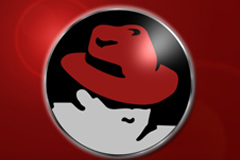Red Hat celebrates 10 years of Red Hat Enterprise Linux

In 2002, Red Hat was perhaps the biggest of the Linux distributors, but the biggest? SUSE and Caldera--before its went over to the dark side and became Darth SCO--were also contenders for the top spot. Behind them, now struggling Linux companies such as Mandriva and deceased businesses Progeny Linux, which tried to take Debian Linux to market, were also potential players. Then, ten-years ago, Red Hat completed the move, which would take it from first among equals to being corporate Linux's top dog: the release of Red Hat Enterprise Linux (RHEL) to being the first billion-dollar pure open-source play company.
Today, Paul Cormier, Red Hat's president of products and technologies said in a statement that “Red Hat is thankful to the worldwide Linux community and all our partners, and is proud to recognize the achievements we’ve made with Red Hat Enterprise Linux. Building on the last decade, today Red Hat enables the most advanced IT environments in organizations that offer products and services that truly enhance the way we work and live. Red Hat Enterprise Linux is a great example of making disruptive technology an industry standard.”
Indeed it has, but back when Red Hat first made its “disruptive” move, many Linux fans hated Red Hat's change in direction. They did so because at the same time Red Hat was launching RHEL, it was closing down its low-end Linux distribution: Red Hat Linux (RHL)
The last boxed distribution—yes Linux used to come in boxes—Red Hat Linux 9 was meant for everyone but home users to corporate IT departments. With the release of RHEL and retirement of RHL, Red Hat's non-business users often felt like they were being forced to upgrade or even abandoned.
Fedora, Red Hat's community Linux distribution was OK, but it wasn't the same thing. From its first days, it was clear Fedora was meant for developers who wanted the freshest code and not for small office/home office Linux users.
As Cormier told Timothy Prickett Morgan of The Register, "We were faced with a really tough decision back then, and we really bet the company on this and it paid off in a billion ways. We made a decision to stop Red Hat Linux, which at the time was the most popular, hobbyist Linux operating system out there. It was a very, very, very unpopular decision with the engineers and with some people in the community. The engineers asked the CEO to fire me at the time."
They did indeed. I heard all about it at the time from several of them. Red Hat's timing and how it delivered its message to its users also have been handled better. Red Hat 9 had a very short supported life-span. In addition, Red Hat fans of the day suspected that Red Hat was beginning to move away from the Linux desktop. They were right.
While Red Hat still has a desktop version, RHEL Desktop Red Hat's real desktop interest, in so much as it has one, is its thin-client Linux desktop model. This is based on a Simple Protocol for Independent Computing Environments (SPICE)-based virtual desktop infrastructure (VDI). The bottom line though, as Jim Whitehurst, Red Hat CEO told me last year is that he thinks the “Fat client operating system [the traditional desktop] is becoming a legacy application.” Ubuntu. Linux Mint, MEPIS, and Peppermint OS users, to name a few, would beg to disagree.
All that under the bridge, Red Hat was proven right. The real riches for Linux would come from servers. That's true to this day. While relatively few people run Red Hat on their desktop, major companies and Web sites rely on Red Hat every day.
As Al Gillen, IDC's program VP of System Software said in a statement,“Red Hat broke new ground not only for its own benefit, but for a multitude of other business entities that offer commercial support for open source-based products, Try and imagine a world today if Red Hat had not successfully introduced the concept of enterprise-class subscription-based support for an open source product.”
OK, I tried. I can't. Anyone who's anyone in open-source software, SugarCRM, Alfresco, and even black-sheep Oracle, rely on enterprise subscription models.
Today, Red Hat is continuing to move forward with its business oriented take on Linux. In a press conference today, Red Hat executives said to forget about Linux. Instead, users should focus on open-source based cloud technologies and virtualization. It is these, and the Linux plumbing that supports them that will keep Red Hat moving ahead and companies like VMWare or Microsoft that try to stick with proprietary ways to deliver enterprise servces will be left behind.
Like that first move to RHEL, these words are going to annoy Linux's strongest fans. I'll be willing to bet though that just like the shift to RHEL this approach of focusing on what Linux can deliver rather than on Linux per se will be exactly what businesses want to hear.
Related Stories:
Execs: Red Hat to debut EL7 in late 2013, take lead in cloud era
Fedora 17 & GNOME 3.4: Return to a useful Linux desktop (Review)
Red Hat debuts OpenShift Origin project, takes swipe at VMware's Cloud Foundry
Red Hat and SUSE join IBM in new Linux system, Canonical opts out
Red Hat cautiously optimistic about Microsoft's Open Technologies Inc
